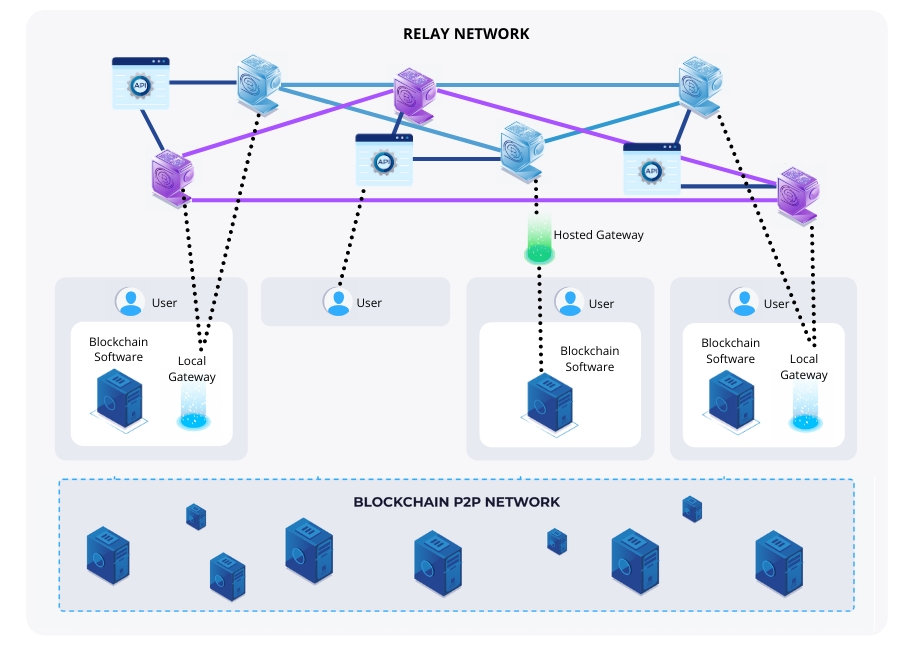BDN Architecture
At the core of the bloXroute BDN is a high performance network. The BDN is comprised of individual servers located around the globe at points optimized to provide faster propagation of transactions and blocks between Gateways. The servers, called Relays, are connected in an optimized topology to ensure that data from each individual Gateway is moved optimally to all other Gateways in the network. Gateways connect to Relays to receive notifications of new transactions and blocks faster than they would otherwise be received from the peer-to-peer network.
bloXroute Relays come in two types: Transaction Relays and Block Relays. As the names suggest, Transaction Relays propagate transactions and Block Relays propagate blocks. The split Relay design ensures that transactions do not interfere with the propagation of blocks.
As shown below, globally distributed users install and run the bloXroute Gateway. Each user’s Gateway connects to the user’s blockchain client which, in turn, is connected to the blockchain’s peer-to-peer network. To begin sending and receiving transactions and blocks over the network, each Gateway connects to a single Transaction Relay and one or two BDN Block Relays depending on network quality.
